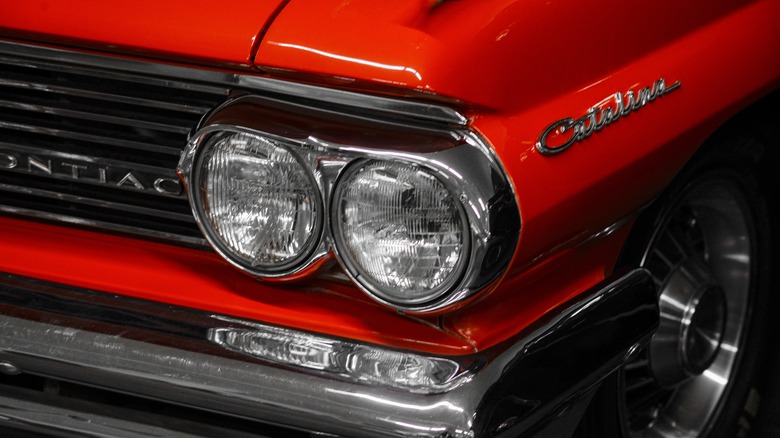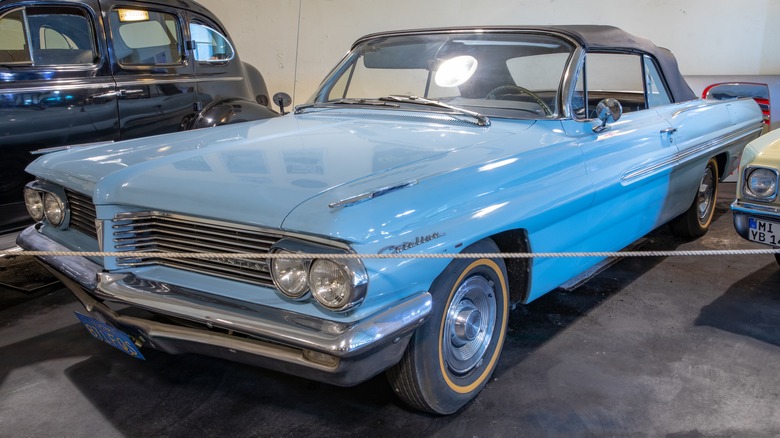The 1962 Pontiac Catalina That Ran On NASCAR Tech
Pontiac is one of those brands that muscle car enthusiasts will inevitably talk about when they start discussing the American muscle car movement. With iconic builds like the aptly-named GTO, Firebird, and Trans Am in its lineup, it's easy to understand why, as those are some of the most revered muscle cars to ever hit the two lane blacktop.
Among the Pontiacs that tend to get overshadowed by those more celebrated muscle cars is the Catalina. Though Pontiac V8 power was standard in Catalinas starting in 1959, in the 1960s, the build would become a muscled-up beast capable of taking on all comers on the roadways. Indeed, some might even argue the manufacturer went overboard in muscling the build up for the '62 model year when they offered a massive under-the-hood upgrade in the guise of its race-ready Super Duty 421 engine.
Ranked among the most powerful engine Pontiac ever made, the SD 421s officially boasted 405 hp, though it's believed the ponies actually revved north of 450. With that power, ghe Catalinas were barely street legal, with the NASCAR-level heads that adorned the 421s further pressing the matter. Surprisingly, not much separated those factory engines from those powering the Pontiacs dominating NASCAR races of the era, save that the latter used a single four-barrel build and the one's powering some showroom Catalinas utilized twin Carter 500-cfm four-barrels combined with an aluminum intake manifold.
Pontiac's Super Duty engines helped redefine power in the muscle car era
Given the cost of the Super Duty 421 upgrade, Pontiac offered it in limited capacity. In fact, the powerful engines were only offered on factory Pontiacs because of a 1962 NHRA rule change that deemed engines and parts outfitting stock class racing vehicles must be available in a manufacturer's production builds. In the end, it's estimated only about 180 Super Duty 421 engines were produced for Pontiac's production vehicles, with the bulk of them going under the hood of Catalina's in 1962.
Pontiac was, perhaps, better suited than most race teams to adapt to that rule change, thanks in no small part to the "Super Duty" program, which helped birth the race-ready 421s. Said program was the brainchild of Semom Emil "Bunkie" Knudsen, who instituted it when he took the title of General Manager at Pontiac in 1956 in hopes of designing cars for younger drivers. The Super Duty program also led to the development of the split front grill design that would come to define many of its famed muscle cars of the 1960s and 1970s and, of course, further ramping up the capabilities of Pontiac's already powerful V8 engines.
The latter development was a big part of Pontiac's ascension to perennial contenders on the NASCAR circuit, with Knudsen believing race track success would impact showroom sales. Though Knudsen left Pontiac for Chevrolet before the souped-up Catalinas hit the streets in '62, the Super Duty program he championed directly led to their existence — and likely the company's entire muscle car lineup for that matter.

